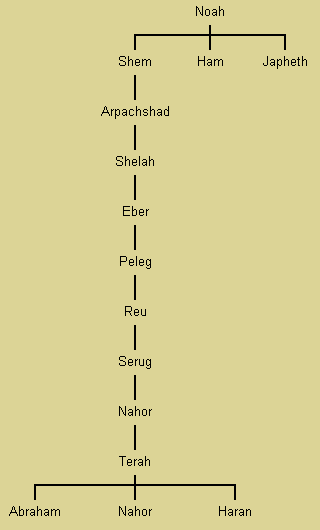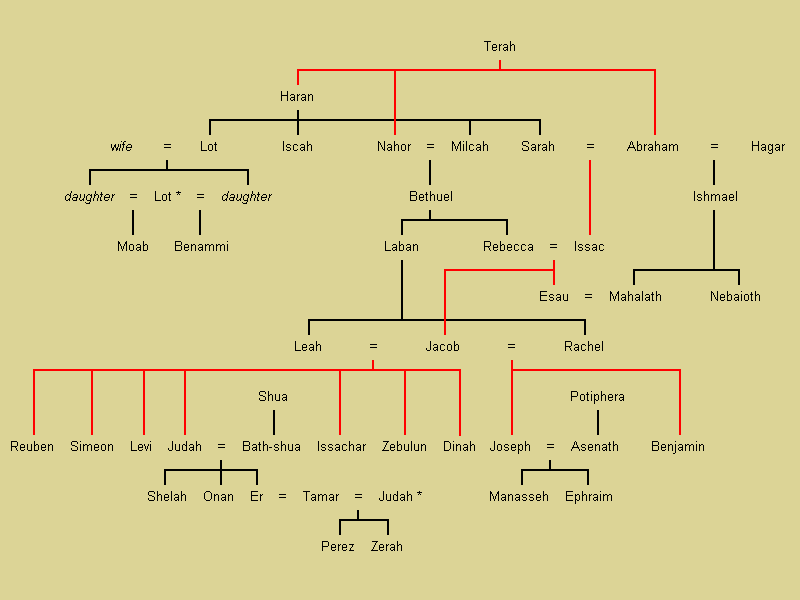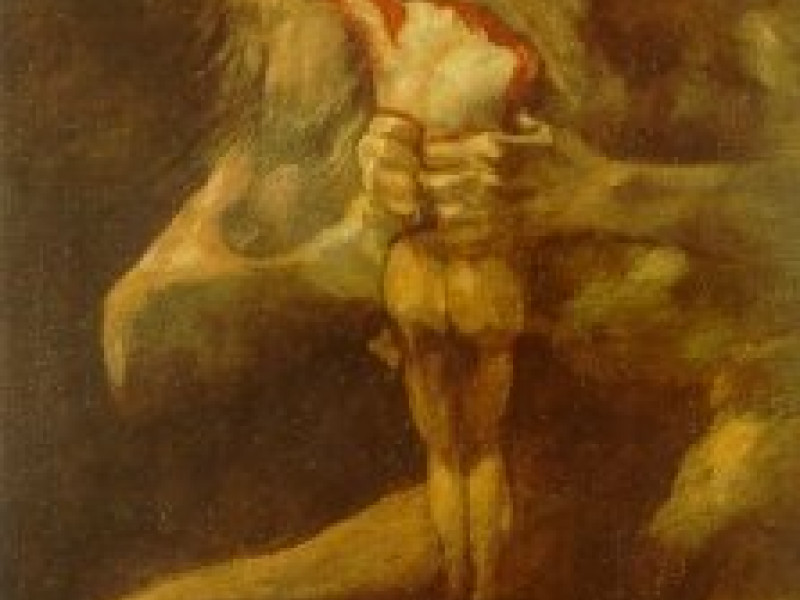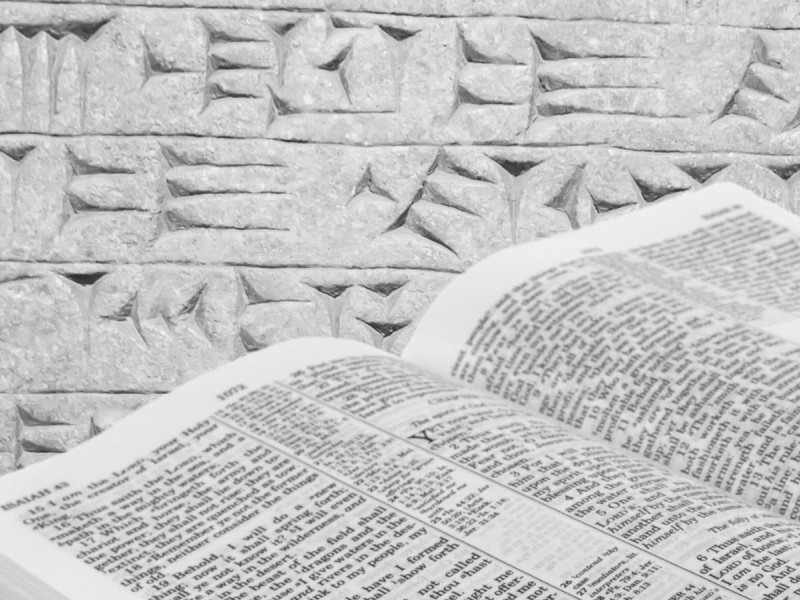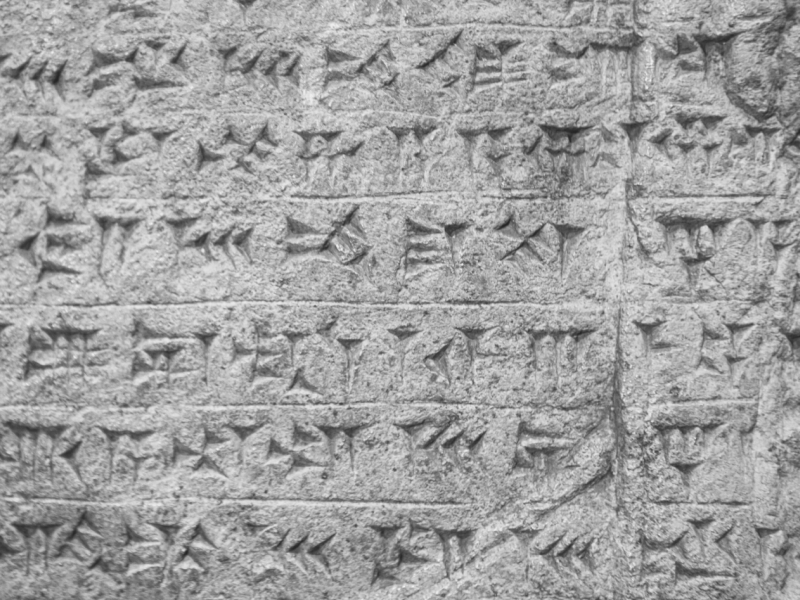Genesis: In Brief
Before I give you a summary about Genesis, I think it would be appropriate to reveal something about the authorship of the first book of the Old Testament.
When I read Genesis (Bereshit), I had a mixture of feelings: awe, fascination, curiosity and disbelief.
To most people, Genesis is the most interesting and controversial book in the Bible. Some people take the whole of Genesis literally, while others have different interpretations of the scriptures. And others still look at it with skepticism and disbelief.
Genesis is one of the five books that were ascribed to Moses, the Hebrew lawgiver, who led the Israelites out of slavery and Egypt towards the Promised Land – ancient Canaan. The first five books of the Old Testament were called the Pentateuch, though the Jews call it the Torah (Law). The Torah was fundamental core of the Hebrew/Jewish faith and religion. The books in the Torah are:
Genesis (υένεσις, Bereshit)
Exodus (έζοδος, Shemot)
Leviticus (Λευιτικός, Vayikra)
Numbers (Αριθοί, Bamidbar)
Deuteronomy (Δευτερονόμθιομ, Devarim)
However, the Torah can also mean the whole of the Old Testament, which is seen as the Hebrew Bible, but I won’t go into the rest of the Old Testament here.
The land of Canaan was known by several names over time, such as Judaea, Palestine and Israel. The kingdom was divided into two after King Solomon, with Israel as the northern kingdom, and Judah as the southern kingdom. During the Roman period, it was divided further into provinces – the most important being Judaea, while Galilee formed the northern Roman province. Many people just referred it to as the Holy Land, because three large religious faiths – Judaism, Christian and Islam – say that this Promised Land was the centre of their faith, particularly the city of Jerusalem.
God, in a covenant with the patriarch Abraham, promised this land to him. Abraham was the father of the Hebrew people. His grandson, Jacob, was the one who gave a name to the Jewish people, since his other name was Israel. Jacob’s twelve sons made up the twelve tribes of Israel. It was Jacob who brought his family into Egypt, during a great famine, where his son Joseph had great power among the Egyptians as a governor.
Moses himself was a descendant of Levi, one of the sons of Jacob. The Levites didn’t receive land as one of the tribes, because they were given priestly functions instead, enabling them to live within any land of the twelve tribes. Finally, Joseph, Levi’s brother, had two sons, who formed two of the tribes of Israel and replaced Joseph as a single tribe.
Returning to the subject of Genesis, the account in Genesis is comprised of the Creation, the Flood, and the lives of three important patriarchs before Moses’ time – Abraham, Isaac and Jacob.
Although Genesis was set before Moses’ time, the history of the Jewish people, as given in Genesis, was said to have been revealed to Moses at Mount Sinai, in a revelation.
(Please note that you don’t need to read this page, if you have already read Genesis. This is only a background for the other part of Dark Mirrors, and a summary of Genesis for those who have not read this book. However, you may find the family trees on this page interesting.)
See also the timelines of the patriarchs and Genesis.
Creation and Adam
God created the world in six days. He brought light on the first day. He separated the sky from the sea on the second day, and the sea from the land, with plants of all sorts, on the third day. On the fourth day, He created the sun, moon and the stars. On the fifth day, he filled the land, sky and sea with animals. (Genesis 1, 2:1-4)
On the sixth day, He created human beings who resembled Him in form, creating male and female (Genesis 1:26-28), giving them control over other animals. The first two humans were named Adam and Eve. God created Adam from the dust in the Garden of Eden; bringing his creation to life by blowing into his nostrils (2:7-9). He placed Adam in the Garden of Eden, where the first man named every animal and bird (2:19-20), but these animals were not suitable companions for man. So He then put Adam in a deep slumber, taking out one of his rib-bones to create Eve (2:21-24).
(Note that in chapter 1, God seemed to have made man and woman at the same time, but in chapter 2, Adam was created first, and Eve afterward.)
According to some later legends, Eve was not the first woman. Adam’s first mate was Lilith, who was later transformed into a demon. I have devoted a page to Lilith.
God told them to eat from any fruit within the Garden, except the Tree of Knowledge that gives knowledge of what is good and what is bad. If they disobeyed, they would die. There was another tree in Eden called the Tree of Life.
But a snake, more intelligent than any other creature in the Garden, told Eve that they wouldn’t die if she ate the fruit (possibly a fig). Rather, she would become more like God. Eve ate the fruit from the Tree of Knowledge and gave a fruit to Adam to eat. Once they ate the fruit, they became aware that they were naked and felt ashamed of their nudity. They hid their nakedness with fig leaves.
When God realised that they had disobeyed Him, he punished the pair as well as the snake. The snake would crawl on its belly, and the man and his mate wouldn't trust one another. With Eve, she and all of her kind would be subject to her husband, and suffer from the pangs of childbirth. Meanwhile, Adam would have to toil on the harsh land, to find his own food. Both humans would struggle and in the end of their life, their bodies would return to the soil, where they came from. (Genesis 3:1-21)
God then banished Adam and Eve from the Garden of Eden, and an angel with a fiery sword barred them from returning, to keep them from eating the fruit from the Tree of Life. (Genesis 3:22-24)
In exile, Eve bore Adam two sons – Cain and Abel. Cain was a farmer, while his brother was a shepherd. When the two brothers offered sacrifice to God, God found the lamb as a more pleasing offering than Cain’s harvest. Cain was jealous of God favouring his brother, so he murdered his brother. God punished Cain for his crime by branding him, causing Cain to wander as a nomad. (Genesis 4)
Eve gave Adam another son named Seth, who became the ancestor of the Hebrew race. Genesis does mention that Adam and Eve had other children, but doesn't give any names (Genesis 5:4).
According to the pseudepigrapha Book of Jubilees, they had nine sons, and it also said that Cain married his sister Awan, while Seth’s wife, Azura, was also Seth’s sister.
Since Adam and Eve were the first couple, Cain and Seth could not possibly marry women from other families, so incest was practiced among the early patriarchs. By Moses’ time, incest was against the law.
Many of the events about Adam and Eve in Genesis are rewritten in the Gnostic texts found at Nag Hammadi, which you will find in Gnostic Cosmogony.
Genesis then goes on to list the descendants of Adam, before the time of the Flood. Although each patriarch had other children, Genesis only listed the direct line from Adam to Noah.
Of these descendants, two of them were of great interest. One was Enoch, the son of Jared, and the other was Methuselah, Enoch’s son. (Genesis 5:18-25)
Enoch enjoyed a personal fellowship with God, and when he was 365 years old, God took him to heaven, without this patriarch ever meeting his death. Several legends and pseudepigraphical texts have been written about Enoch. Genesis didn’t give us much detail about either patriarch, so I had to look for other texts about Enoch. See Enoch and the Book of Watchers.
Methuselah was the oldest to ever live; he died at the age of 969, in the same year as the Flood.
Noah and the Flood
Mankind was flourishing from the descendants of Seth and Cain, populating the Earth with people. However, a storm was brewing, bring apocalyptic changes in the wind.
The text of Genesis describes "sons of God" who lived before the time of the Flood, but it doesn't explain who these sons of God were. Much later texts, such as the Book of Enoch and the Book of Giants, give more explanation. It's not certain that these later texts are interpreting the sons of God correctly, but since we're interested in these later texts and ideas, that's how we'll look at these "sons of God."
According to the book of Enoch, these were supernatural beings, known as angels and as the Watchers (or more precisely, the “Fallen Watchers”, as opposed to the “Holy Watchers”), looked down from heaven and saw how pleasing the young daughters of men appeared, so they took them as wives. The Watchers sired offspring that were “heroes of the past”. These offspring were called Nephilim, and in later legends they were described as giants.
God was not pleased with these unholy unions of angels and mortal women, and with these half-mortal beings (giants or Nephilim). God saw that mankind had become wicked, and decided to wipe out the entire human race, as well as the animals of the air and land. God decided to send a Flood. (Genesis 6:1-8) See the Book of Watchers.
Only one patriarch was pious, and his name was Noah. Noah was a son of Lamech and grandson of the patriarch Methuselah.
God decided to save Noah and his family. God instructed Noah to construct a wooden vessel, called the Ark. Noah was 500 when he received his instruction to build Ark, so that he could survive the Flood. After this revelation of the coming Deluge, Noah sired three sons.
Noah was 600 when he boarded the Ark, with his wife, his sons and their wives. Noah also brought on board animals of all kinds in pairs, male and female.
Rain fell and floods came for 40 days and 40 nights, destroying animals, men and giants. Only those within the Ark were saved. They stayed in the Ark for 150 days, with the water continuing to go down, until the Ark came to rest on one of the mountains of the Ararat range. (Genesis 6-8)
From there, Noah and his family left the Ark, and they began to repopulate the Earth. Noah had three sons, Shem, Ham and Japheth. All three sons had many descendants. Of interest in the genealogy is Nimrod, son of Cush and grandson of Ham. Nimrod was the first conqueror; he began in the kingdom of Babylon, before annexing other kingdoms into his empire.
However, the Genesis was more interested in the descendants of Shem. It was from the Shem line, that Abraham was born. (Genesis 10-11)
Another interesting scene in Genesis is the Tower of Babel. At the time, everybody spoke one language. Many of them settled in Babylonia. They built cities from bricks made from clay hardened under fire. When the people decide to make a tower that could reach the sky. God decided to disperse the people, by making people speak different languages, so they couldn't understand one another. So the people speaking different languages scattered all over the world. Abraham was perhaps born not long after this time.
Hebrew Patriarchs
In Dark Mirrors of Heaven, I am less interested in the rest of the Genesis (Genesis 12-50), which is about Abraham and his descendants, which you don’t need to read, but for the sake of completeness, I have included here the summaries of these three patriarchs: Abraham, Isaac and Jacob.
Abraham and Isaac
Abraham was at first called Abram. He was the son of Terah, and brother of Nahor and Haran. Abraham was born in Ur, a city in southern Mesopotamia (Babylonia), but his father moved his family to Haran in the kingdom of Mari, northwestern Mesopotamia. Abraham was married to Sarah (at first called Sarai).
God spoke to Abraham, who was 70 when he left Haran. God promised Abraham many descendants and that his people would have the land of Canaan. Lot, his nephew, the son of Haran, joined Abraham in this journey.
At first, they were living in Shechem, in Canaan, until famine drove Abraham and his followers to Egypt. Abraham fearing for his life, asked Sarah to pretend that she was his sister, not his wife. Abraham knew that the Egyptian ruler would find Sarah very attractive, despite her old age. The Egyptian ruler was warned in a dream that he would die, if he slept with Abraham’s wife. Fortunately for the king, he didn’t have sex with Sarah, but he and his retainer were inflicted with disease. The ruler rebuked Abraham for the deception, and was told to leave Egypt. Sarah gained an Egyptian slave girl named Hagar from the king.
They returned to southern Canaan, and Abraham and Lot decided to separate because their servants were fighting over the precedence of their masters.
Lot resided in the wicked town of Sodom, in the Jordan Valley. God destroyed Sodom and Gomorrah, but saved Lot and his family, except that Lot’s wife was turned into a pillar of salt when she looked back at the valley. (Genesis 19:23-29) Lot’s two daughters decided that each should have a son by their father, because there were no other men around in the valley. One son was named Moab, who was the ancestor of the Moabites, while the other son was named Ben-ammi, the ancestor of the Ammonites. These two tribes would later become enemies of the Israelites.
Abraham fought in a war against some of the smaller kingdoms that existed then, particularly against Chedorlaomer of Elam. Abraham was allied to Melchizedek, king of Salem. Melchizedek was known as the priest of the Most High God. After the victory, Abraham received a blessing from Melchizedek. (Genesis 14)
God again promised land for Abraham and his descendants and in covenant to this promise, Abraham and other male followers should all be circumcised. (Genesis 15-1-21)
At the time, Sarah was barren, so she gave her husband her slave girl Hagar, as his concubine. Hagar became the mother of Ishmael, who was said to be the ancestor of the modern Arabic people. God did promise Abraham that he would have a son by Sarah however, but both of them were aging. Sarah did not think this was possible, since she was so old. But nevertheless she did fall pregnant shortly afterwards and gave birth to Isaac. Sarah, fearing that her son would lose his inheritance due to Hagar's jealousy, told Abraham that Hagar and his son Ishmael should leave them. Abraham reluctantly told his son by Hagar to leave.
God later told Abraham to offer his other son Isaac as sacrifice to Him. Abraham would have obeyed and gone through with the sacrifice, but God intervened at the last moment. Apparently, asking for the sacrifice of Abraham’s only legitimate son and heir was to test Abraham’s faith and loyalty to Him. (Genesis 22)
When Isaac was older, Abraham sent one of his servants to find a non-Canaanite wife for his son. His servant successfully returned from Haran with Rebecca, daughter of Bethuel. Bethuel was the son of Nahor, Abraham’s brother, and of Milcah, Abraham’s niece and Sarah’s sister. Isaac fell in love with Rachel and they were married.
Abraham died at the age of 175. Isaac and Ishmael buried their father beside Sarah, in the Cave of Machpelah, near Mamre.
Jacob
At Beersheba, Isaac and Rebecca had two sons, Esau and Jacob. Esau, the eldest son, was a great hunter and favourite of Isaac, but his foreign wives made Rebecca angry. She favoured Jacob, and decided to help her son win his older brother Esau’s birthright. Since Isaac was blind in his old age, he didn’t know that his wife had tricked him into giving Esau’s blessing to Jacob until afterwards.
When Isaac found out, he called Jacob back and told him what to do. Fearing his brother’s wrath, Jacob readily agreed to go to find a wife from Laban, the brother of his mother Rebecca. On his way to Haran, Jacob slept, using a rock as his pillow. He had a vision that his descendants would receive land that God had promised to Abraham. Jacob named this place Bethel.
Jacob worked for Laban for seven years, until he was worthy enough to marry his daughter. Jacob did fall in love with Rachel, Laban’s youngest daughter, but Laban tricked Jacob into marrying Leah, his older daughter. To placate Jacob, Laban agreed to marry his other daughter to Jacob too, but only if Jacob worked for him for another seven years.
God favored Leah such that she had four sons in succession. Jealous over her sister and her failure to give a son to Jacob, Rachel gave her slave girl (Bilhah) to Jacob as a concubine. Bilhah gave two sons to Jacob. Jacob also received another concubine (Zilpah), this one from Leah. Then Leah herself had two more sons, and a daughter named Dinah. Finally, Rachel did fall pregnant, and had a son named Joseph.
Around this time, Jacob decided to return home, with his family and the animals he had gained from working for Laban even longer. In his journey, he wrestled and subdued an angel at Peniel, who blessed him with the name Israel.
Jacob arrived home, where a reunion and reconciliation with his brother took place. Esau settled in the land, south-east of the Dead Sea, and he became the ancestor of the kingdom of Edom.
Rachel did have another son named Benjamin, giving birth on the road between Bethel and Ephrath. However, Rachel died in childbirth and was buried there, which would later become the town of Bethlehem. Isaac died at the age of 180, shortly after Rachel. Isaac was buried in Mamre, near Hebron.
One of Jacob's sons, Judah, had unwittingly slept with his widowed daughter-in-law, Tamar, whom he thought was a prostitute; she gave birth to twin sons, Perez and Zerah (Genesis 38). It is from Perez that Judah’s descendants would become rulers of the kingdom of Israel; particularly David and Solomon.
Jacob’s ten older sons were jealous of Joseph, because he was their father’s favourite, gaining a beautiful robe. One day, they jealously tossed Joseph into a dried well, and later sold Joseph to slave traders. The slave traders then took him to Egypt. The brothers lied to their father, saying that wild animals had killed Joseph, showing the grieving father Joseph’s bloodstained robe. However, it was really God’s plan that Joseph should go to Egypt.
In Egypt, Joseph gained his freedom when he interpret the pharaoh’s dream that Egypt would enjoy seven years of good crops, but afterwards a famine lasting for seven years would come to Egypt and Canaan. The pharaoh, listening to Joseph’s advice, began storing the abundant crops. He appointed Joseph as governor, a position of great power, only answerable to the king himself.
Back in Canaan, Jacob was forced to send his ten sons into Egypt to buy grain because of the famine, but keeping Benjamin with him. Joseph easily recognised his brothers. Joseph tricked his brothers into bringing their father and Benjamin into Egypt. There, Jacob was happily reunited with his lost son.
Jacob and his sons stayed in Egypt, even after the famine ended. Jacob died in Egypt, seventeen years after departing from Canaan, aged 147, but his body was taken to Bethlehem and buried beside his wife Rachel. Joseph died 54 years later at the age of 110.
Jacob’s descendants remained in Egypt, but Joseph’s wisdom was forgotten, so that they became slaves to the Egyptians until the time of Moses.
Jacob’s sons were the ancestors of the twelve tribes of Israel. It is from his son Judah that Israel would have a long line of kings, headed by David and his son Solomon. David would become the ancestor of Jesus, who would herald a new religion, Christianity.
Sources
Bible
There are many different translations of the bible, but I can only read English, so I have to find the appropriate translations. Although I’d prefer to get my own books, there are some websites that provide the whole texts on the internet.
Good News Bible: Today English Version
United Bible Societies
1976; reprinted 1986
Tanakh: A New Translation of the Holy Scriptures
According to the Traditional Hebrew Text
The Jewish Publication Society; 1985
Jewish Publication Society
(Hebrew Bible – translation of Tanakh)
By Jimmy Joe


